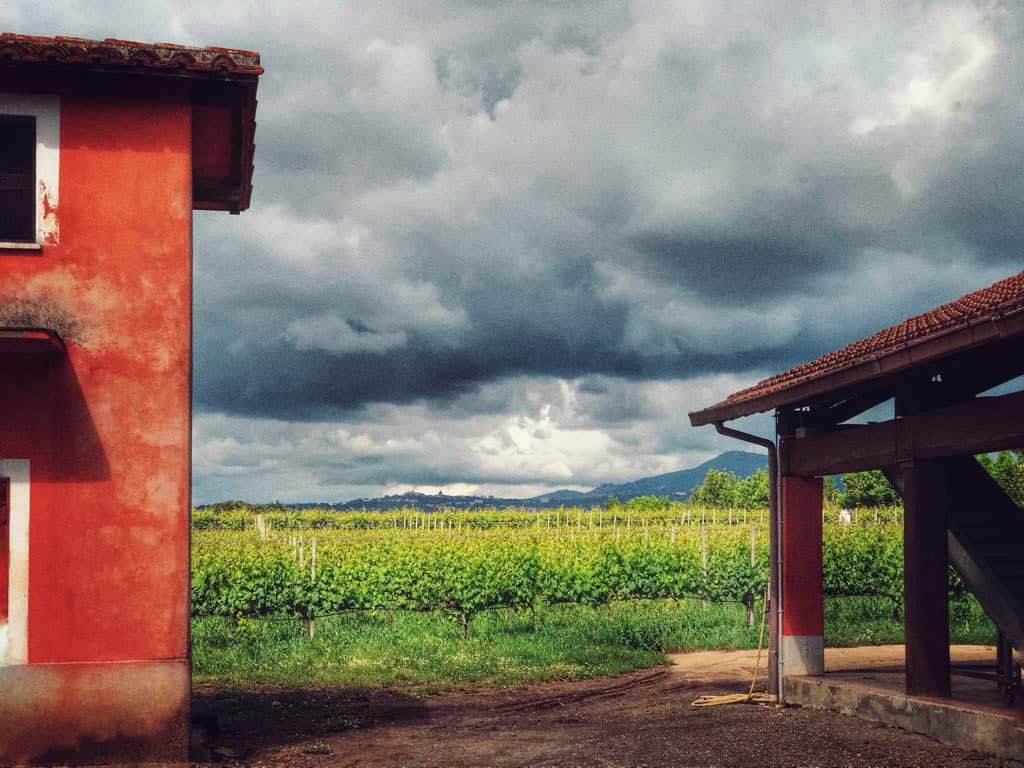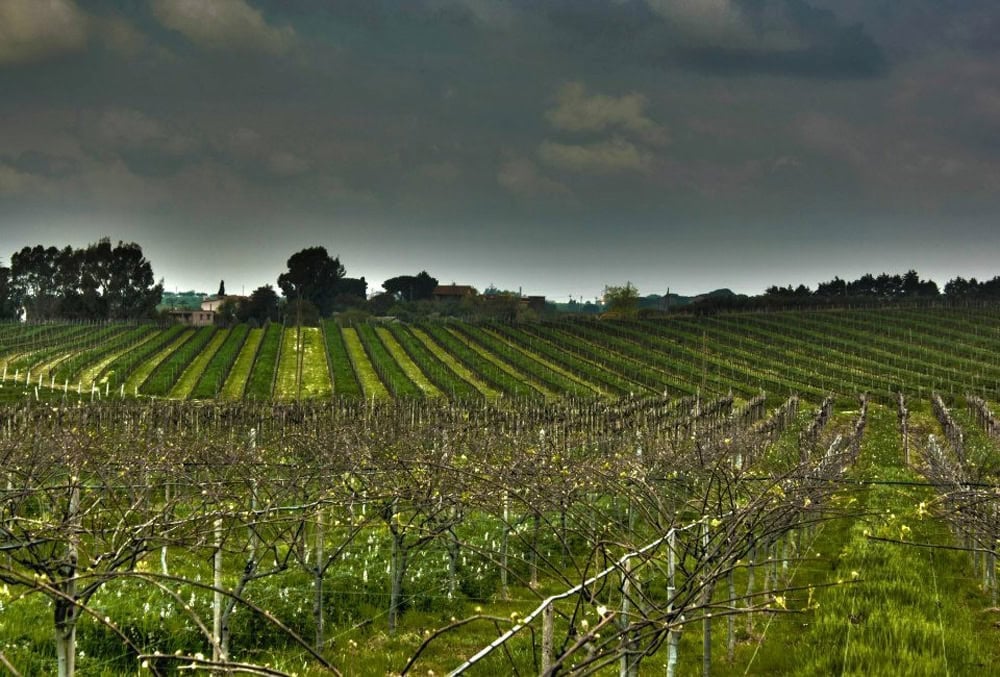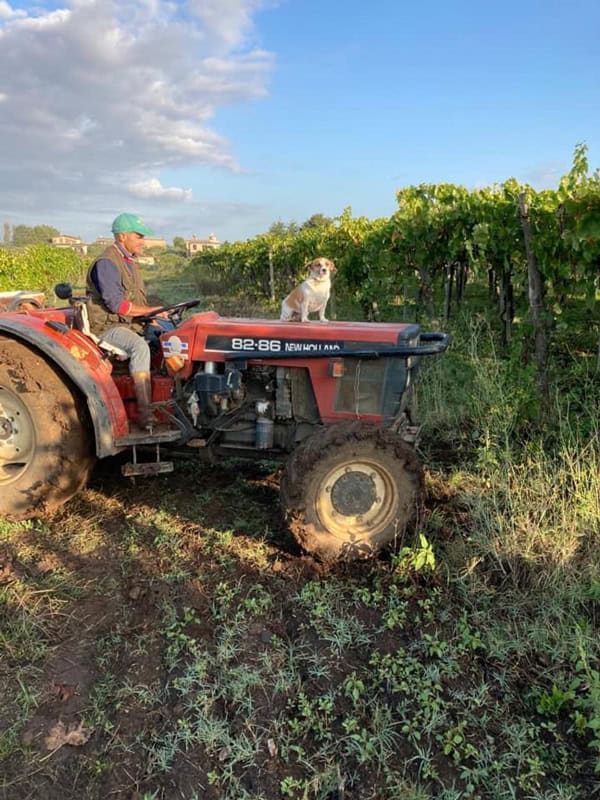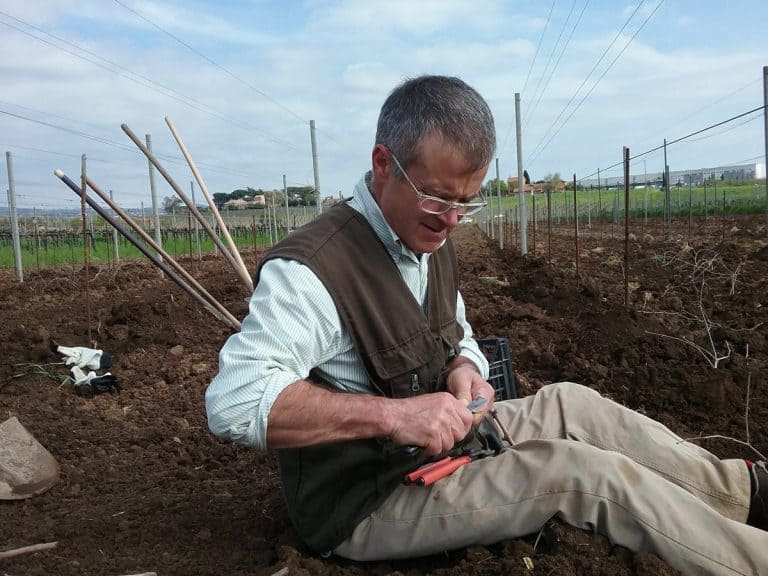Antonio Cosmi and his brother Fausto have faces weathered by the sun. They are the heirs of a family of farmers who have been practising agriculture in the Roman countryside since the 1960s, from the Castelli Romani down to the coast of Pomezia and Torvaianica. Since 2004, they have been certified organic. "But we never thought of embarking on the path of so-called natural wines," smiles Antonio, whom we meet at the Terraviva tasting in Rome. Terraviva is the agency that represents producers like Triple A, Maurizio Cavalli, Sarfatti, and Velier in Lazio with the motto "We don't believe a wine should adapt to the market it faces; it should primarily be an expression of its land and those who work it." Some might be offended or feel pulled into this, but we are in one of the "temples" of natural wine, or however we want to define the movement that opposes the big players in the wine industry.

A Malvasia unlike the "others"
The first question comes after tasting a Malvasia Puntinata, a flagship grape of their area that has never fully convinced us. We taste a vague idea of what is normally called Malvasia, but in the glass, there is a "peasant" wine that does not resemble the others and at the same time is clean and has a strong character. But is it really Malvasia Puntinata? "Of course," smiles Antonio Cosmi. "We just work with its own yeasts, using a small juice of the same grapes as a starter for fermentation, which we will press together with the rest of the grapes a week later. This initial juice has already started to ferment and will help ferment the whole batch." Native yeasts are one of the leitmotifs of "natural wine."
"It all started as a mistake"
But how did the Cosmi brothers, farmers of the Roman countryside, come to vinify this way, we ask? Did someone convince them? Were they struck by biodynamics? "Absolutely not," explains Antonio. "It all started as a mistake. Eleven years ago, one afternoon, we finished harvesting around 5 pm. We were dead tired, so we left all the grapes in the tank, planning to work on them the next morning. The next day, we saw that fermentation had already started. We were scared; we thought we would have to throw everything away. But in the end, we left the tank as it was and focused on the rest of the grapes. We were curious to see how it would turn out." In the family cellar, the brothers let the fermentation finish and finally racked the wine. They thought they would taste something awful. But instead... "All things considered, that wine born by mistake convinced us. But we didn't fully trust ourselves, so we had friends and experts taste that 'new' wine alongside the 'old' one, made as we had always done. Well, everyone liked the new one." This is how the new era of this Roman countryside winery began. We tasted their wines, all very precise, straightforward, clean, and distinct. Contrary to common belief, the "reverse homogenisation" that would make all natural wines taste the same does not inhabit these labels. Even the blend of all the vineyard's grapes, made to avoid wasting what was left of the disastrous 2023 harvest that destroyed 70% of the clusters, has its own rationale. In fact, this could be the beginning of a new chapter for a winery that has always vinified each variety separately: with an even more selective choice of grapes, this territorial blend could truly represent the spirit of their land.

"Here’s why using native yeasts makes sense"
There is another element that convinces the Cosmi brothers to continue on the path of native yeasts, which also speaks to the choice we can call "natural." "We’ve seen," explains Antonio, "that without external yeasts, fermentation occurs less violently. This first of all leads us to use much less induced cold. Additionally, we’ve noticed that during racking, we don't need to use enzymes for clarification: perhaps because the lees are less hard and compact, but we continue to observe that even bad odours are completely absent, at least so far, and therefore we can limit our intervention to continuous observation of the vinification process without adding external substances." Is this a path everyone could take, then? "Well, it's a path that requires presence and attention: the grapes must always be healthy, there must be no rot, and you must not expect anything extraordinary, for example, pushed and particularly intense aromas." And so we better understand why we liked their Malvasia compared to others we randomly tried. Intervention, yes, in control and selection, in tasting, in understanding the timing and not wanting to push too hard. Intervention, no, "or as little as possible," Antonio says with modesty, when it means adding external "ingredients" to the grapes. A sort of "emulation" of what happens in the world of extra virgin olive oil: nothing can be added to the mechanically obtained juice from olives. And perhaps this could be a path from which wine could draw new strength.
Cosmico, an ancestral with degorgement
Now, let's talk about the wine that especially among the new generations (but not only, let's say among those who have chosen to drink "differently" seeking more freshness and lightness rather than intense "wine-ness") represents the "new generation" of natural wine, the one most popular on the market: ancestral or "col fondo" sparkling wines, as the "contemporary" sparkling wines made in the most traditional and ancient way are called. We are talking about Cosmico, a sparkling white wine, an IGT Lazio from 100% Trebbiano grapes. An ancestral wine in which bottle fermentation is induced with the addition of a small part of the same Trebbiano must. The bottles are closed with a crown cap (like in the traditional method) and then manually disgorged, "à la volée" as the artisanal farmers (who are now almost extinct) of Champagne say: manually, without freezing the bottle neck with suspended yeasts. "You just need to rest the bottle’s bottom on your belly and watch the bubble that indicates when the yeasts are all in the neck," explains Antonio. "At this point, you remove the crown cap, expel the yeasts that form the sediment, refill the bottle with an equal sparkling wine, and recap with a crown cap." Et voilà, the wine is ready!

Disgorging or not? The joy of choice
This is what the French cousins would say, who – as we noticed during the tasting tour among the various European labels of Terraviva – have also started using manual disgorgement outside Champagne, a practice that, however, divides the different protagonists of the natural wine movement. Some say that even the sediment, the exhausted yeasts, contribute to the natural quality of this wine; others prefer to ensure a clearer product (even in taste) that does not lead to different drinking experiences between the first and last glass. There is also discussion among those who suggest keeping the bottle still to let the yeasts settle at the bottom and then proceeding with a "two-phase" drinking, and those who advocate shaking the bottle for a more homogeneous drinking experience. The discussion can continue: the important thing is that each of us can keep choosing how and what to drink. And enjoy it. This is the real luxury.


 US tariffs: here are the Italian wines most at risk, from Pinot Grigio to Chianti Classico
US tariffs: here are the Italian wines most at risk, from Pinot Grigio to Chianti Classico "With U.S. tariffs, buffalo mozzarella will cost almost double. We're ruined." The outburst of an Italian chef in Miami
"With U.S. tariffs, buffalo mozzarella will cost almost double. We're ruined." The outburst of an Italian chef in Miami "With US tariffs, extremely high risk for Italian wine: strike deals with buyers immediately to absorb extra costs." UIV’s proposal
"With US tariffs, extremely high risk for Italian wine: strike deals with buyers immediately to absorb extra costs." UIV’s proposal Meloni: "Tariffs? If necessary, there will be consequences. Heavy impact on agri-food sector"
Meloni: "Tariffs? If necessary, there will be consequences. Heavy impact on agri-food sector" The Government honours the greats of Italian cuisine, from Bottura to Pepe. Massari: "Thank you, Meloni, the only one who listened to us"
The Government honours the greats of Italian cuisine, from Bottura to Pepe. Massari: "Thank you, Meloni, the only one who listened to us"






